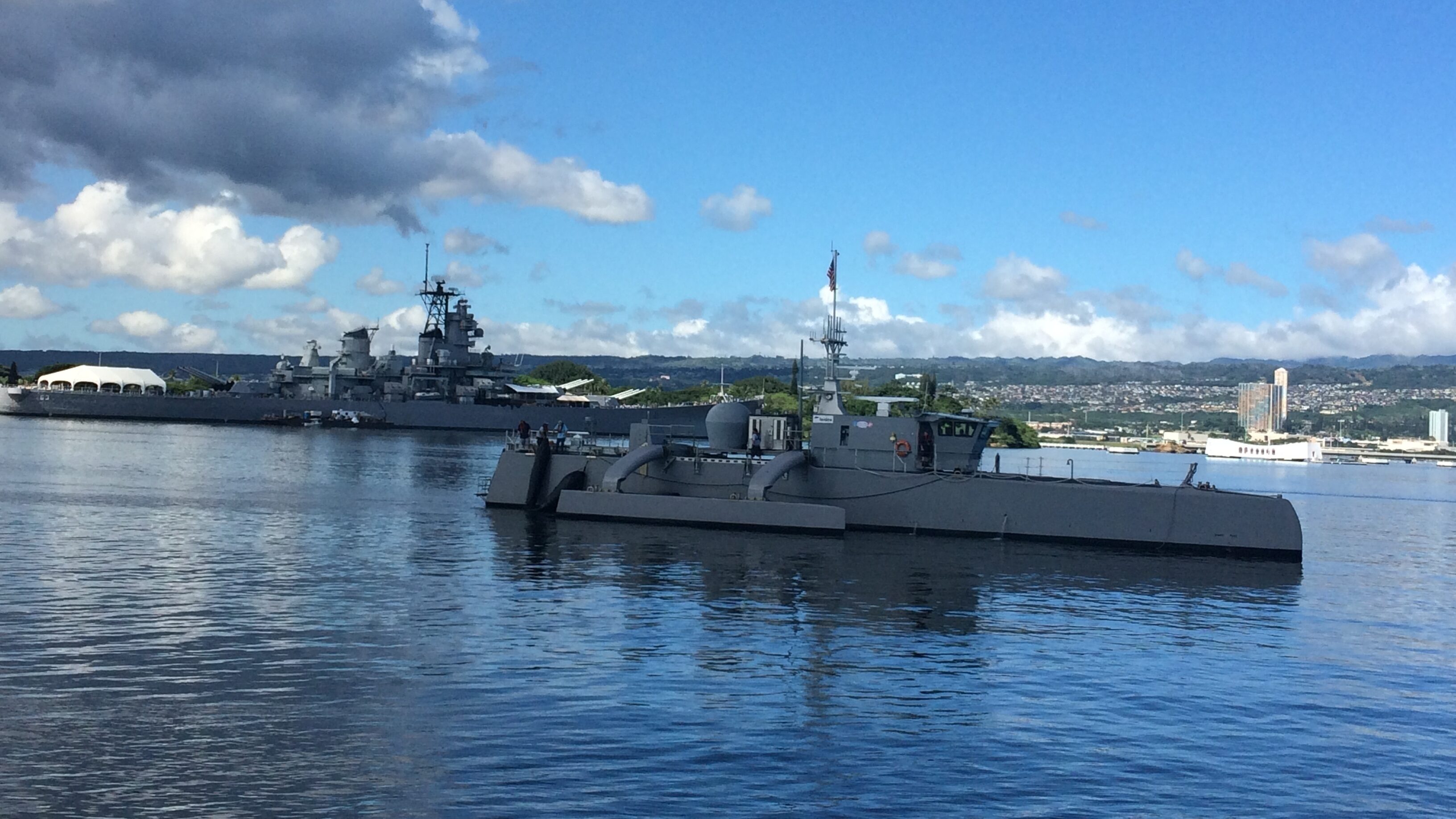
The experimental unmanned Sea Hunter is the forerunner of the Navy’s proposed fleet of robotic warships. (U.S. Navy photo)
SNA: The senior Navy officer in charge of surface warfare requirements says the service’s future for unmanned ship maintenance is a portrait still in flux and will require its own strategy.
“Any platform that you build is going to have to have a sustainment structure and obviously for an unmanned platform, we’re not going to be doing any planned maintenance at sea,” said Rear Adm. Paul Schlise, director for surface warfare requirements, also known internally to the Navy as N96. “I think that’s a picture still being painted.”
While speaking to reporters on Tuesday at the Surface Navy Association’s national symposium, the one-star admiral was forward that the issue remains an open question. He suggested that “conditions-based maintenance” will be important to servicing the unmanned fleet.
Conditions-based maintenance generally refers to using sensing technologies onboard vessels to help predict when certain parts or systems will fail so the service can plan to bring the ship into port before a failure happens and to provide the shipyards with information ahead of time about what repairs will be needed. (The Army is currently investigating a similar strategy.)
Breaking Defense reported this summer that industry anticipates the smallest unmanned systems will be expendable and not require regular maintenance. Larger unmanned vessels will likely end up in private shipyards for servicing, industry executives said.
“There’s a lot of repair and overhaul yards that we have access to. That doesn’t necessarily have to be the big ones where we send all the aircraft carriers or a destroyer,” Joe DePietro, a vice president at Lockheed Martin, said in August. “Because we understand how to plan the maintenance, and we know how to work with the customer on how to contract the maintenance, we’re in a pure space discussion.”
While Navy leadership regularly discusses the service’s plans to flood the fleet with unmanned technologies, the issue of maintaining these systems is a less-discussed topic.
RELATED: The underrated Navy topics you might have missed in 2021
A concept used in the commercial shipbuilding industry is a separate vessel that acts like a submarine tender, but for unmanned vessels. That vessel allows for mariners to sail to where unmanned systems are positioned and service them while at sea.
But before the Navy can build the strategy Schlise referenced or tap commercial industry for its own ideas for unmanned system maintenance, the service ostensibly still has a battle in Congress about how it uses unmanned platforms in general.
During a panel on Wednesday, Rep. Elaine Luria, D-Va., a former Navy commander and member of the House Armed Services Committee, said she remains unconvinced that the Navy has effectively argued how it will incorporate unmanned systems into the fleet. Specifically, she criticized the service’s suggestions to retire proven warships to free up funds for investing in untested technologies.
The service put that message front and center in 2019, and it was met with an uproar of bipartisan, bicameral anger. The idea quickly died when then-Vice President Mike Pence stepped aboard the aircraft carrier Harry Truman (CVN 75) to declare the ship will not be retired more than two decades early.






















